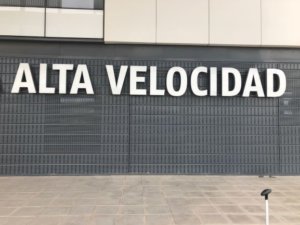
16.02.2021
The 7 keys to file for insolvency proceedings
Who can file for insolvency proceedings? On what grounds can the insolvency procedure be based? What keys are essential when filing for insolvency proceedings? Does a plurality of creditors have to be accredited in every case? What type of evidence can and shall be provided?
 Por
Sanz González , María
Por
Sanz González , María The keys to file for insolvency proceedings must be known, since if they are not followed, the application will probably be denied. In fact, most times the Mercantile Courts reject the necessary bankruptcy applications. For that reason, you must apply these keys at the time of filing the claim.
Contacto No te quedes con la duda, contacta con nosotros. Estaremos encantados de atenderte y ofrecerte soluciones.1. Who can file for insolvency proceedings?
According to the Insolvency Law, the debtor and its creditors may file for insolvency proceedings. When it is filed by the creditor, the insolvency proceeding is called necessary bankruptcy (“concurso necesario”). Unlike voluntary insolvency proceedings, necessary insolvency proceedings require a thorough proof than the voluntary insolvency proceedings. This is due to the fact that the courts do not want the insolvency proceeding to be filed for a punctual non-payment of a credit. For this reason, the necessary insolvency proceeding requires proving a qualified insolvency. Such insolvency is not synonymous with aggravated losses. In fact, this is reaffirmed by the STS of April 1, 2014 (RJ 2014,2159).
2. On what facts can insolvency be based?
Article 2.4 of the Insolvency Law (TRLC) establishes that the request for insolvency proceedings must be based on external facts. These facts are 6:
- Existence of judicial or administrative declaration of insolvency.
- Existence of a seizure title without sufficient attachable assets.
- Garnishments due to executions in progress.
- General suspension of payments.
- General avoidance of AEAT, Social Security or Employment credits.
- Asset stripping or liquidation of assets.
These events can be grouped into three groups: unsuccessful foreclosures, general dismissal of payments, and asset stripping or liquidation of assets.

Si te ha interesado este artículo no dudes en leer:
The Express Bankruptcy Procedure
3. What keys are essential when applying for insolvency proceedings?
For now, from the above mentioned, we can highlight the following requirements:
i) Proof of qualified insolvency.
Insolvency does not have to coincide with losses that cause dissolution, but it may be an indicator of the same. Insolvency, on the other hand, is characterized by the inability to regularly comply with due obligations. For its part, the Court of First Instance No. 6 of Madrid on January 8, 2020 clarifies that:
“insolvency cannot be confused with negative equity, nor is it correct to equate insolvency with cessation of payments”.
ii) Based on a fact that reveals insolvency.
It must be based on one of the six facts listed. These facts are events on which the creditor can rely to prove the debtor’s insolvency. In the words of AAP Barcelona 181/2019 they are “a series of facts that reveal to a third party the situation of insolvency”.
In addition to these first two there are others:
iii) Demonstrate the plurality of creditors.
This requirement is not explicitly included in the regulations, however, generally, if it is not accredited the application will be rejected. The doctrine and case law consider it necessary in any case. The reasoning lies in the fact that if there were not several creditors there would be no need for an insolvency proceeding to reach an agreement. If it were only a question of one creditor, the agreement, which is an objective of the insolvency proceeding, would not make sense. As the ruling of the Commercial Court No. 7 of Madrid of January 18, 2019 rightly brings up. There are other legal channels to claim a single debt from a creditor, such as the execution of non-judicial titles. Therefore, the need for multiple creditors is a matter inherent to the insolvency proceedings. As stated by the AAP Huelva 203/2019 of June 10. In the same way, it´s agreed by the order of the Commercial Court No. 3 of Elche of May 9, 2016, which states: “the passive assets must be made up of several insolvency creditors”.
In fact, although it is not explicitly stated in the rule, the legislator does so implicitly. It does so by referring in the plural to expressions such as list of creditors, agreement with creditors… However, there is an exception to this accreditation.
iv) If there was an unsuccessful foreclosure, it is not necessary to prove the existence of other creditors.
If the creditor bases its request on an unsuccessful foreclosure, the bankruptcy law grants him a benefit. This benefit is that the creditor does not have to prove the existence of other creditors of the debtor. The creditor will not have to indicate or list who these other creditors are at the time of filing the insolvency proceeding. For this purpose, the creditor must provide a title certifying the unsuccessful attempt of seizure due to insufficient assets. The latter has been underlined by the AAP Baleares 63/2018. Said order establishes that it is not enough to hold an enforceable title. It is necessary that the execution has been attempted and it is impossible to seize the object of execution.
v) If there was an unsuccessful execution, the debtor cannot oppose it.
In the case of execution there is another particularity. The debtor will not have a time limit to oppose the petition. This means that the Court will issue the insolvency proceeding directly on the next business day. This exceptional situation is set forth in Article 14 TRLC. It is assumed that in the event of insolvency demonstrated by the title there will be several creditors with unpaid claims against that debtor. This circumstance is affirmed in turn by the AAP Vizcaya 534/2019. In fact, the AAP La Coruña 43/2017 goes further and states that: “what is exceptional is that an insolvent person or entity -more so in the case of commercial companies- does not have more than one creditor”.
Furthermore, the debtor will not even be given a hearing before the declaration. In this way, the AAP Valencia 1253/2017 made it explicit.
vi) It is not necessary to provide full proof of the claim.
It is sufficient to provide documentary evidence from which the credit can reasonably be inferred. Indeed, the existence of the creditor’s debt is not an issue to be debated in the admission of the insolvency proceeding. The only requirement for the purposes of standing is to provide a document inferring a debt. As it is not necessary to provide a document with full certainty of the debt, it will be possible to provide usual documents of the economic traffic. A decision that was pronounced by the AAP Barcelona 168/2018 of December 5, 2018.
vii) The absence of data on the assets does not prevent the declaration of the insolvency proceeding.
Even if the creditor is unable to provide exact details of the assets of the insolvent party in the application, this will not prevent the declaration of the insolvency proceeding. This position has been defended by the AAP Granada 76/2011 as the dominant position of the jurisprudence. This was established for those insolvent parties that had disappeared from their domicile or ceased their activity. In this case, it was difficult for the creditor to provide data on the active mass of such companies. However, if in addition to the disappearance and cessation, there are debts with public administrations or seizures, the insolvency will be demonstrable. If all these circumstances concur, the debtor’s inability to meet the payment of its obligations can be externalized.
4. What types of evidence can and should be provided?
In the insolvency petition, various types of evidence can be provided: documentary, expert, interrogatories… However, the most common is to base most of the evidence on documents. The documents that can help to prove the debtor’s insolvency are the following:
- Commercial or solvency reports of the debtor. Although these reports are not full proof of solvency, they do show evidence of solvency.
- Land registry data on the debtor. The generalized seizure of several properties may be an indicator of such insolvency. However, this should be qualified as stated in AAP Zaragoza 499/2007. What is relevant in itself is not the existence of a plurality of seizures, but the current amounts of these executions. Only with the knowledge of such updated amounts will it be possible to know whether the debtor’s assets are generally compromised.
- Documentation on administrative enforcement proceedings.
- The debtor’s annual accounts. Although they do not constitute full proof, they are an indicative evidence. From the annual accounts it is possible to obtain data such as the relation between current liabilities and current assets. If the first is higher than the second, at least transitory difficulty to face the payment of debts will be appreciated. One way of observing this relationship is through the working capital. Then, the working capital as stated by SAP Madrid 165/2014 is a “palpable demonstration of the state of insolvency”. Furthermore, as stated by the aforementioned AAP Barcelona 181/2019 from the annual accounts the existence of several creditors can be inferred.
- Resolutions of the Social Court that conclude with the registration of insolvency. In this case, as stated in AAP Alava 23/2011, it will be the debtor who must prove that it has sufficient assets to cover its credits.
Conclusions
When filing for insolvency proceedings, it is necessary to prove different subjective and objective assumptions. When more details are provided on these requirements, there will be less chance that the court will reject the petition, which is common. The main focus should be on proving qualified insolvency, a revealing fact and plurality of creditors. The evidentiary advantages of basing the application on an unsuccessful enforcement should also be noted. When based on such a fact it will not be necessary to prove the plurality of creditors and there will be no opposition from the debtor.
If this article has been of interest, we also suggest you to read the following article published on our website:
Who is eligible to apply for a Bankruptcy Procedure?
Bankruptcy procedure of natural persons
Jurisdictional and administrative procedures in the Bankruptcy Procedure.












